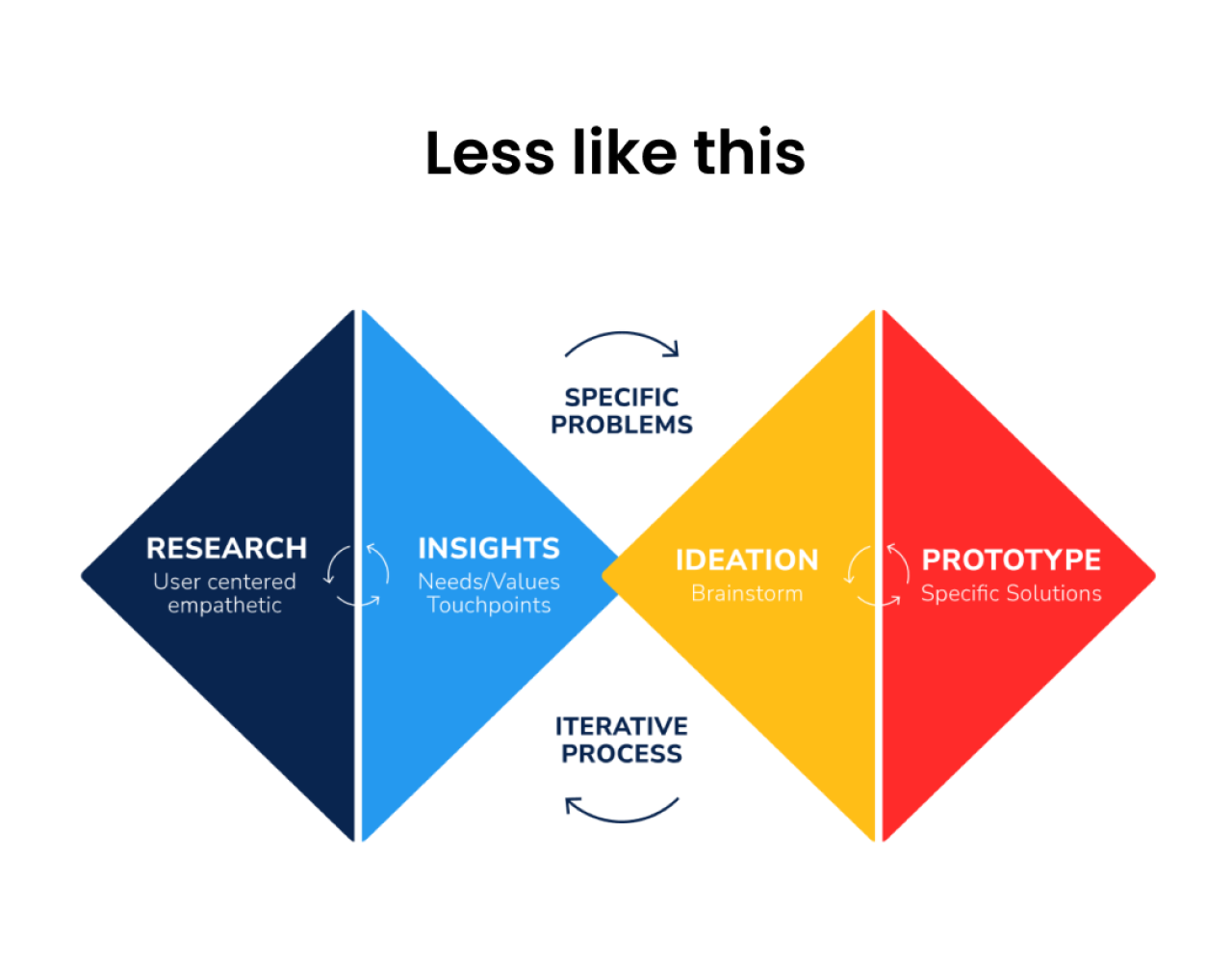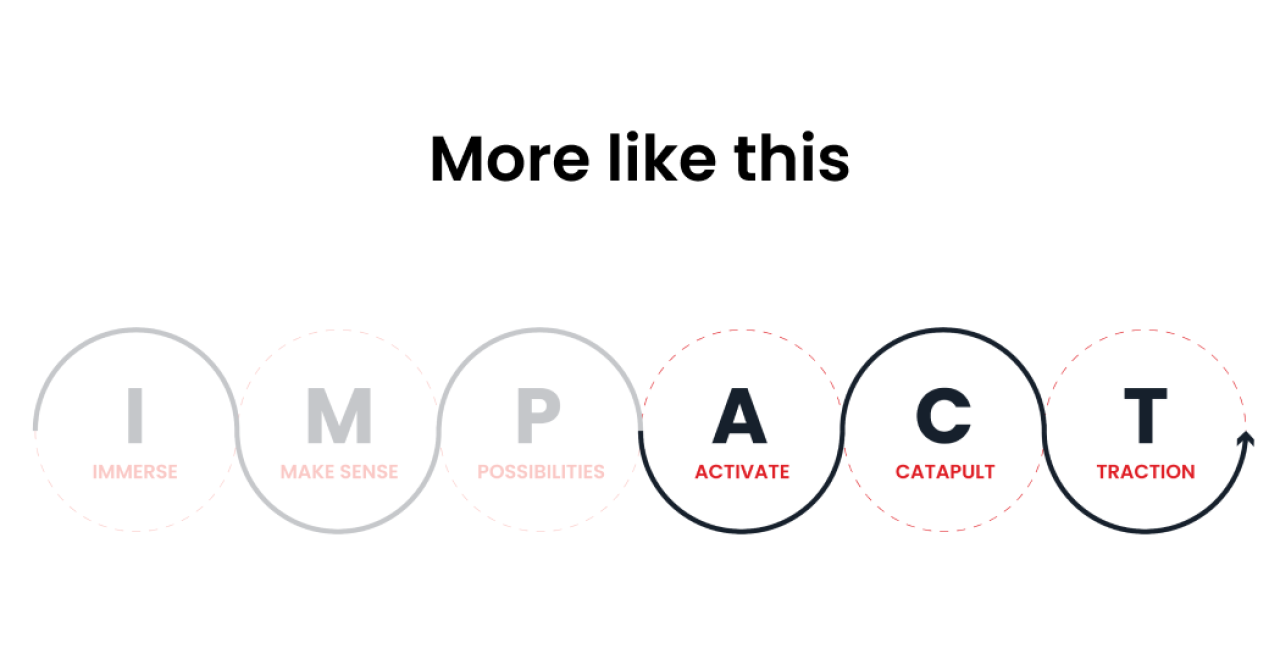
Fear, uncertainty and risk.
Three of the most common barriers to success we’re hearing from innovation teams as they navigate the transition from post-it note idea, to a live, in-market product or service.
We continue our dive into the delivery stage of the innovation process with teams across the sector in order to bring new ideas to help with the challenges they face.
We’ve been fascinated by these insightful conversations and are excited to bring new ideas to the sector shortly. In the meantime, we thought you might like to read about 3 of the more surprising themes we’re hearing.
1. Teams aren’t experimenting enough (if at all)
From a traditional innovation process perspective this stage can be confusing. The famous double diamond massively underplays the importance of experimentation in the delivery stage.
The teams we spoke to talked freely about not understanding the What, How, When or Why of experimentation. And who can blame them? Prototyping, smokescreen, MVP, pilots - even the lexicon can be confusing.
So some teams are consciously avoiding it all together. And some report getting very excited by an idea and jumping straight to build.
But this can be like closing your eyes and praying for a bullseye. It rarely pays off.
Failing to experiment minimises your opportunities to test, iterate and improve the idea, ultimately maximising your risk of failure. It’s a high risk, high cost and ultimately high stress strategy that most innovation teams are keen to avoid.
In contrast to the famous double diamond, our impact innovation model positions the delivery stage as taking about half the time, energy and resources of any NPD project.


Existing innovation processes stop at the ‘test’ or prototype phase, often leaving the delivery phase to chance. We designed our Impact Innovation framework to consider delivery at every stage of the process, and added in an additional step (Traction) to ensure it’s embedded.
We’ve added 3 stages to the process:
Activate - Getting ideas off paper and trialling them in the real world
Catapult - Taking new ideas to market
Traction - Ongoing support as you scale up.
And can happily talk through how we’ve used these extra stages on projects.
2. Current experimentation is very standardised
There’s more to life than smokescreen tests. Teams that are experimenting are using a very standardised approach for every idea. But ideas aren’t standard. Each one is very different and using the right experiment for testing will maximise feedback and minimise risk.
We’ve talked to a number of teams who were either not aware of the multitude of experimentation options or weren’t selective in matching ideas to the most appropriate methods.
Choosing the right experiment always begins with identifying the biggest unknowns, questions and assumptions. The bespoke testing strategy and the right experiments can easily follow.
For example, you often see teams building high-fidelity clickable prototypes to help them answer a simple question like: do people want this feature? In doing so, they’re spending precious resources building a high-effort shiny feature, just to find out that no one wanted it to begin with. Instead, they’d be better off running a much cheaper and quicker experiment like a quant survey and Kano analysis to prioritise their features first. This will better answer their question and require a fraction of the effort, time and cost.
We have developed an experimentation picker to help you identify the right experiment for your idea. With 10 possible experiments and over 40 tools that sit underneath them, it ensures you are closer to identifying the right strategy for your idea. Take a look.
3.) Overlooking feasibility and viability
Lots of teams are, quite rightly, keen to prove desirability. If you can prove people want or value your idea, then that’s half the battle. And we’re never going to argue with that. Your meta-question might change over time but we almost always start by proving desirability.
But experimentation shouldn’t end there. Looking at an idea from all angles ensures you’re building something that’s commercially viable and feasible for your team to deliver. And that means running experiments or tests that help you unpick and understand these dimensions of your idea.
There’s less confidence when it comes to looking through the feasibility and viability lenses of ideas. But this doesn’t require accountant-like modelling skills or to design a complete operational plan. Just experimenting with some basic tools in this space can prove or disprove the potential of your idea or give you the key insight that could unlock its success.
For example, on a ‘sponsor a tree’ fundraising proposition, we tested two versions of the same idea. One specifically geo-located and targeted, one generic in geo-located woodland area instead (much less effort). We learned through A/B testing that acquisition and average donation amount was almost the same on both options. By modelling the delivery cost for each, we learned that Option 1 was almost 5x more expensive to deliver. Building these scrappy commercial models allowed us to flex the idea early on with the commercials in mind - ultimately building the most sustainable version of the idea, without sacrificing desirability.
Again, The experiment picker can help guide you.
We’re continuing to talk to innovation teams in order to understand the specific barriers to effective delivery. Do get in touch to let us know yours.
yvonne@goodinnovation.co.uk
Further ideas and insights to follow.